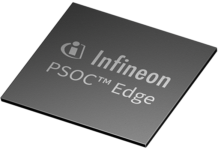The demand for high performance, energy efficiency, and scalability has paved the way for a paradigm shift in software development technologies in the evolving landscape of embedded systems. The rise of multicore architectures has revolutionised the way we design and develop embedded software, enabling unprecedented levels of parallelism and computational power. As the Internet of Things (IoT) and Industry 4.0 continue to gain traction, future-proofing embedded systems has become a critical endeavor, and multicore software development technologies are at the forefront of this transformation.
The Multicore Revolution
Traditional single-core processors have become increasingly inadequate in meeting the ever-growing demands of modern embedded systems. Multicore architectures, with their ability to execute multiple threads or processes concurrently, have emerged as a game-changer, offering significant performance gains and energy efficiency. This shift has necessitated the adoption of new software development methodologies, tools, and techniques to harness the full potential of multicore processors. A recent in-depth research study uncovers crucial findings about the fast-changing global multicore processors Market, projected to witness a significant growth spike with a 13.5% CAGR between 2023 and 2030. The market expansion is fueled by increasing needs for boosted computing capabilities in sectors like consumer electronics, automotive, and healthcare.
Performance Scalability
One of the primary drivers behind the adoption of multicore architectures is the need for performance scalability. As embedded systems become more complex and data-intensive, the ability to distribute computational workloads across multiple cores has become crucial. Multicore processors enable parallel execution of tasks, resulting in faster processing times and improved overall system responsiveness.
Energy Efficiency
Embedded systems often operate in resource-constrained environments, where energy efficiency is a critical factor. Multicore processors allow for more efficient utilisation of available resources, enabling dynamic load balancing and power management strategies. By distributing workloads across multiple cores, individual cores can operate at lower frequencies, reducing overall power consumption and extending battery life.
Heterogeneous Computing
The concept of heterogeneous computing, where different types of processors (CPUs, GPUs, DSPs, etc.) are combined within a single system, has gained significant traction in the embedded domain. This approach allows for optimised workload distribution, leveraging the strengths of each processor type for specific tasks. Multicore software development technologies play a pivotal role in orchestrating and managing the execution of workloads across these heterogeneous architectures.
Trends and Innovations in Multicore Software Development Technologies
Multicore architectures have catalysed software development advancements, reshaping embedded systems and fostering future-proofing strategies. This transition towards parallel programming encounters diverse parallel programming models and frameworks. Notable examples include OpenMP for shared-memory parallel programming, Intel Threading Building Blocks (TBB) for C++ task parallelism, CUDA and OpenCL for harnessing GPU parallel computing, and Message Passing Interface (MPI) for distributed memory parallel computing in HPC applications. These frameworks abstract complexities, empowering developers to concentrate on higher-level design and algorithm development, thus streamlining parallel code composition.
Multicore Operating Systems and Schedulers
Multicore Operating Systems and Schedulers have evolved to address inefficiencies in traditional single-core processor designs. Operating systems like Linux and Windows, along with real-time OSs such as VxWorks and QNX, now incorporate Symmetric Multiprocessing (SMP) support, optimising core utilisation and scalability.
Advanced scheduling algorithms like work-stealing and cache-aware scheduling enhance task distribution, reducing contention for shared resources. Hypervisor-based Virtualisation with Xen and KVM enables efficient consolidation of guest OSs on multicore platforms, while Lightweight Virtualisation technologies like Docker and LXC ensure efficient application packaging and deployment across multicore systems. These advancements enable embedded systems to fully utilise hardware resources, enhancing overall performance and responsiveness.
Multicore-aware Toolchains and Debugging
Developing and debugging software for multicore architectures presents unique challenges like race conditions and deadlocks. To tackle these, multicore-aware toolchains and debugging tools have emerged, providing developers with advanced capabilities. Parallel debuggers such as Intel Inspector and Arm DDT allow stepping through parallel code and inspecting data across threads or processes. Performance Profilers like Intel VTune help identify bottlenecks and optimise code execution.
Static and Dynamic analysis tools like ThreadSanitizer detect concurrency issues early. Multicore-aware compilers like GCC offer auto-vectorisation and loop parallelisation. These tools are crucial for robust and efficient embedded software development on multicore systems, ensuring optimal performance and future readiness.
Software Design Patterns and Architectures
Software design patterns and architectures have evolved to efficiently harness multicore architectures, emphasizing parallelism, scalability, and maintainability. Notable patterns include Task Parallelism, which divides problems into independent tasks for concurrent execution, and Data Parallelism, processing data partitions simultaneously for efficient workload handling.
Pipelined Architectures concurrently execute computation stages, enhancing throughput, while Reactive Architectures like the actor model and reactive extensions promote event-driven programming. Additionally, microservices with containerisation enable scalable and independently deployable services. These approaches empower developers to construct inherently parallel and adaptable embedded systems. Such systems adeptly meet evolving hardware and workload demands while ensuring optimal resource utilisation on multicore platforms.
Hardware-Software Co-design and Optimisation
The increasing prevalence of multicore architectures in the embedded domain underscores the vital importance of hardware-software co-design and optimisation. Collaboration between hardware engineers and software developers is crucial to guarantee optimal performance, power efficiency, and resource utilisation. This collaboration involves leveraging hardware-specific features such as SIMD and GPU acceleration for software optimisation, employing techniques like vectorisation and loop unrolling.
The software dynamically configures hardware resources like clock frequencies and cache policies based on workload characteristics to optimise performance and power consumption. Heterogeneous computing optimisation utilises different processor types (CPUs, GPUs, DSPs) to enhance overall system performance and efficiency for specific workloads. Techniques like approximate computing and reconfigurable hardware facilitate dynamic adaptation to varying workload requirements, ensuring embedded systems effectively utilise multicore architectures while adhering to stringent performance, power, and resource constraints.
Challenges and Future Directions
Multicore software development technologies have made significant strides in future-proofing embedded systems, yet several challenges persist. Achieving efficient parallelism across numerous cores requires novel programming models and scheduling algorithms. Managing heterogeneous computing resources introduces complexities, necessitating unified programming models. Security and reliability are crucial, demanding techniques like secure multi-threading and fault-tolerance mechanisms as systems handle sensitive data.
Additionally, managing power consumption and thermal dissipation in high-performance systems remains challenging, necessitating advanced power management techniques. Adapting to emerging architectures like quantum and neuromorphic computing requires flexible software development methodologies. Continuous integration and deployment practices become crucial for rapid iteration and deployment of software updates, ensuring high-performance, energy-efficient, and reliable systems meeting modern digital demands in the embedded systems industry.
To Conclude
As the demand for computationally intensive applications continues to grow, driven by the Internet of Things, Industry 4.0, and emerging technologies like artificial intelligence and machine learning, the ability to future-proof embedded systems through multicore software development will become increasingly crucial. By staying ahead of the curve and adopting cutting-edge technologies, the embedded systems industry can pave the way for a future where intelligent, connected, and high-performance devices seamlessly integrate into our daily lives, driving innovation and pushing the boundaries of what is possible.















